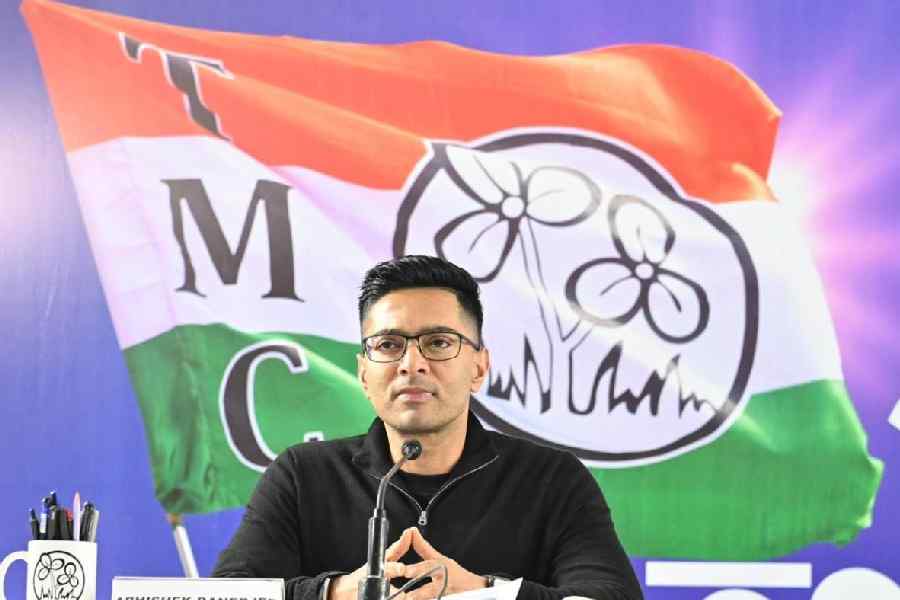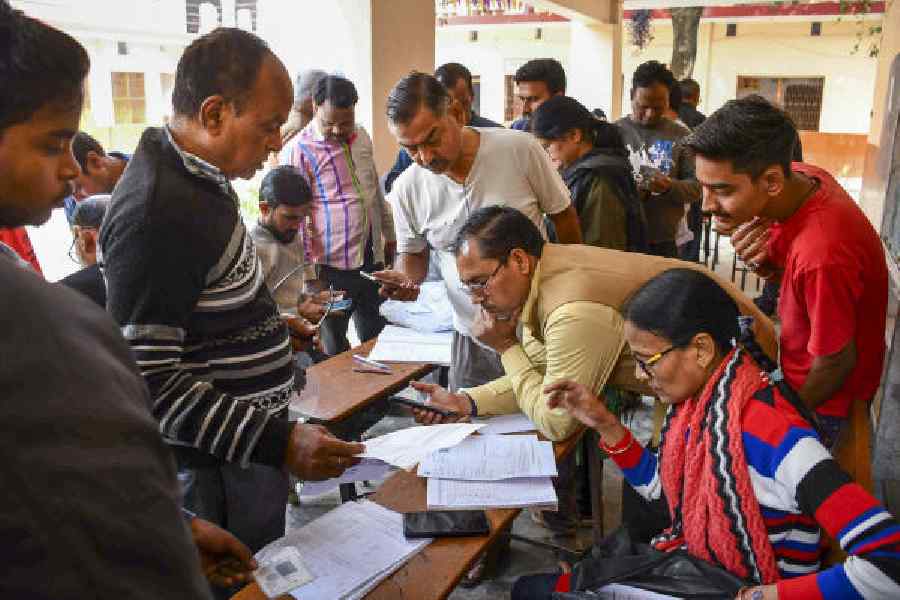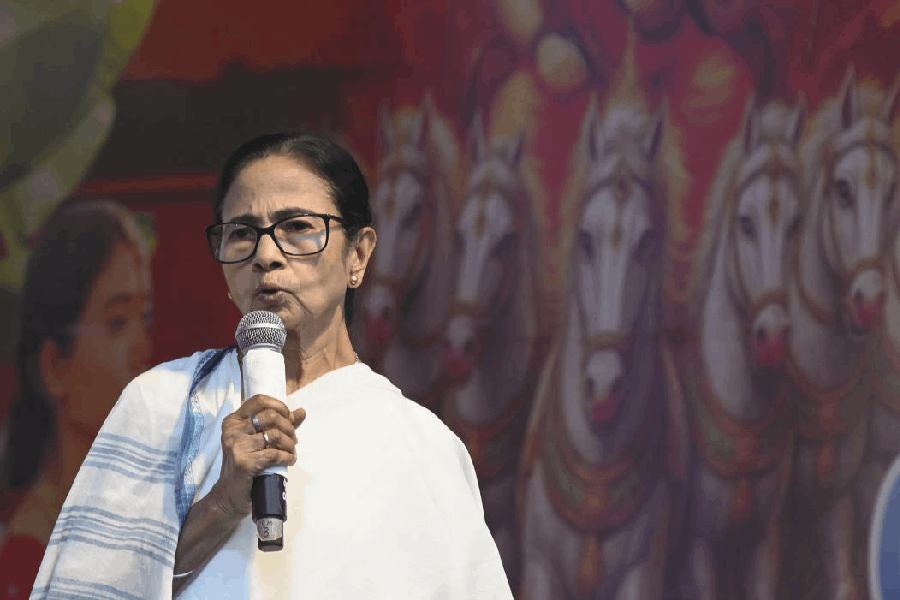On an April afternoon, The Bridge at The Park wore an unusual look, thanks to a bunch of women bustling in gorgeous saris. The occasion was not a wedding, but a meeting of Saree Pacters from across India.
The guest of honour was, of course, Ally Matthan, one of the two women who started the #100SareePact movement on social media last year that had hundreds of women from across the country taking up the task of upholding the sari in all its glory.
Ally was part of a team of seven women from Chennai, Hyderabad and Bangalore, who embarked on a sari trail across Bengal this April. Most of the women are Pacters who, inspired by the response to the #100SareePact, have created the W3 group on Facebook.
“We started thinking about what after the #100SareePact and decided to start this closed group, W3, four months back. It stands for women, weave, world. It is a curated forum of 500 women where we learn and share whatever we know about the sari. We take people on trails — Andhra Pradesh, Tamil Nadu, and now Bengal. The idea is to go to the weavers so that they can see the weaving process,” said Sreemathy Mohan. A few more trips are being drawn up.
Bengal was fifth on the trail map. The other four trails were Puttapaka, a village in the Nalgonda district of Telangana, and Pochampalli, and Kovai Kora, Madurai and Chettinad in Tamil Nadu.
Ally, an entrepreneur and one of the pair that started the pact, has set up the Registry of Sarees, a project that will have a two-fold approach — focused learning events on indigenous techniques and lending support to struggling looms.
“What we will do is we’ll set up a loom, the weavers will weave the saris and deliver to customers directly. We want to drop the middleman,” said Ally. They’ve already set up two projects with Dastakari Haat Samiti, a national association of Indian crafts people. One of the looms is focused on bringing the gamchha sari to the west of India. “We don’t get to experience the finer aspects of weaves that you guys enjoy. So we picked a little hamlet in Nabadwip in Bengal and worked with them,” said Ally.
Hundred gamchha saris are going to make their way to Bangalore soon as will 100 Patteda Anchu weaves from Karnataka, which is the other loom they’ve revived and financed.
“It has been a huge education on the trails and Bengal was no different. We actually had the experience of sitting with Jamdani muslin weavers at Kalna while they wove the saris. It was magical,” said Ally about their Bengal trail that took them to Phulia, Begumpur and Kalna.
1. Jaishree Iyer from Chennai wore a Pochampalli ikat sair. It is a double ikat with both sides having the same design.
2. Devika Ramarathnam from Bangalore came in a dress made of a Benaras organza net sari that she
had accidentally burnt while ironing.
3. Paroma Ghosh, a lawyer and designer from Calcutta, draped two Dhanekhali saris joined together with kantha work.
4. Sara Prem Kumar, a homemaker from Chennai, sported a Chanderi in black, red and gold.
5. Sreemoyee Tarafdar, a clinical psychologist based in Calcutta, wore a red-and-white Dhakai Jamdani, to keep it typically Bengali.
6. Senjuti Das Roy, a lawyer from Calcutta, wore a Tangail sari with a Ganga-Jamuna border.
7. Lopamudra Basu, a teacher in Calcutta, wore a cotton sari woven by tribal villagers that her mother had gifted her.
8. Ally Matthan wore a blue Bangalore silk sari with kantha stitch. The Pacters from Bengal shed light on the fish and nutcracker motifs on her sari that are associated with Bengali weddings.
9. Sridevi Gottipati, a textile expert from Hyderabad, wore a Kundu Khadi sari, which is khadi-by-khadi woven with techniques like Uppada and Jamdani.
10. Keeping summer in mind, Annapurna Banerjee, a Calcutta-based designer, picked a Phulia cotton with a self-woven black border.
11. Sreemathy Mohan from Chennai wore a linen tussore instead of her usual Kanjeevaram.
What is the #100SareePact?
Started by Ally Matthan and Anju Maudgal Kadam of Bangalore, the idea of the movement is to try and wear 100 saris in a year, and upload pictures on social media and share the stories behind the saris with other Pacters.

Pacter Swastika Mukherjee is draping her way to the 100-saris-in-365-days goal!
I am on my 60th in the #100SareePact, but this gamchha sari by designer Sanjukta, my 42nd, is one of my favourites. We were on the roof of her house experimenting and playing around with different ways to drape a sari, because you really don’t need to always do the traditional pleat and anchal thing.
The gamchha sari is very comfortable and perfect for summer. And they are so colourful. Even the most muted of them will be a splash of colours. Because of that you don’t have to accessorise or do a lot of make-up. You anyway carry so much colour.
If you notice, I am also wearing a printed top instead of a blouse. That is another thing that I generally like doing. You will see me wearing funky blouses or tees with even the most formal of silks and tussores. People are actually thinking out of the box when it comes to sari blouses.
Of the 60 saris that I’ve worn as part of the Pact, most have been cotton and linen with some crepes and a few silks thrown in.
The #100SareePact is a fabulous initiative and one of the very few ones on social media that people have actually taken seriously. I am grateful to the #100SareePact for making me pull out saris that I kept buying but was not wearing. I have discovered saris that my mother wore during her college days that would otherwise have been lying forgotten in some cupboard. Some of these saris you won’t get anymore.
I loved seeing people who didn’t know each other liking and commenting on each other’s pictures, thanks to this initiative. I also loved all the stories that were shared along with the pictures. Where the saris were bought, the history. Some of them were heirlooms passed on from grandmothers. Every sari has a story for us and this was a perfect way to share it. I have made whoever was available click my #100SareePact pictures. We are that serious!
I think even now women think that it takes a huge effort to wear a sari, but it is just a mindset. Nothing is more comfortable than a sari, especially in summer. The mindset needs to change.
I am committed to completing the #100SareePact.

T.N. Venkatesh, the managing director of Co-optex, showcased different weaves from Tamil Nadu to the ladies at The Bridge. “Sreemathy Mohan of W3 was part of a textile talk in Chennai and she contacted me that she would like to partner with Co-optex. I saw a lot of people passionate about textiles and since I am trying to get visibility for handlooms, I joined them,” said Venkatesh.











